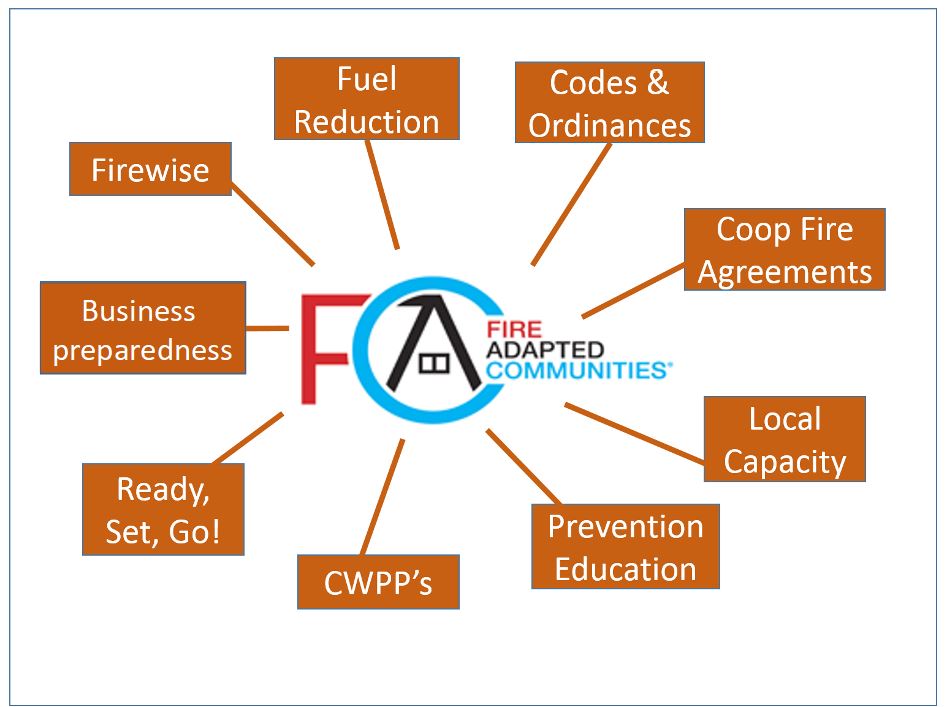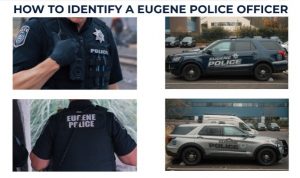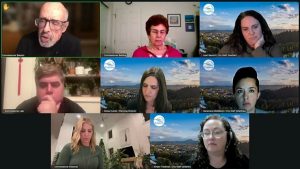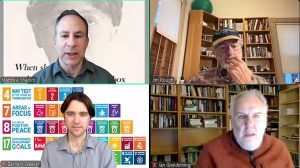Ashland shares lessons from ten years of wildfire preparedness
5 min read
Ashland's Katie Gibble shared lessons learned from ten years of wildfire preparedness.
The City of Ashland has been working on community wildfire preparedness for the last ten years. Katie Gibble spoke to Eugene neighborhoods recently about that work.
Katie Gibble: My name is Katie Gibble. I’m the Fire Adapted Communities Coordinator for the city of Ashland here in southwestern Oregon where the name of my game is wildfire risk reduction. In recent years, we’ve expanded our efforts to encompass the entire community by adopting the Fire Adapted Communities Program of Work. What does a fire adapted community look like? It requires working to prepare our surrounding landscapes, our forests and our rangelands, for wildfire. It involves thinking about our homes and landscaping, which is going to require providing a lot of education outreach to the community to make that individual home work possible. One of the best tools we have in our pocket is actually our wildfire safety ordinance.
Becoming a fire adapted community also requires thinking about evacuation and response of our fire department during a fire. And how was our landscape going to respond to fire, what’s going to happen to our hillslopes in our watershed. How do we help our residents, businesses, infrastructure, and everything else be prepared for wildfire and help our community recover when support is needed.
Thank you for supporting
local citizen journalism
John Q. Murray: Katie said Ashland has adopted a variety of programs and approaches to preparing for the next big wildfire.
Katie Gibble: Fuels reduction, codes and ordinances, local capacity, community wildfire protection plans a.k.a.CWPPs, business preparedness, evacuation, Firewise, all of these are components in becoming a fire adapted community. Different communities are going to have unique solutions and most importantly, to embrace the fire adapted communities concept, a community must be taking responsibility for these items . They must adapt to the way that they design, build, and live within wildfire landscapes that they call home.
John Q. Murray: Ashland’s program was built on a very successful foundation – the Firewise program.
Katie Gibble: Firewise program has been amazingly successful. Nearly 10% of our community resides within a Firewise neighborhood. You all probably know some neighborhoods are more coherent, more organized than others. But to be fire adapted, we need to extend our reach beyond Firewise communities, where there is not an organized effort towards risk reduction. And providing tools and resources to get that work done. A lot of folks in Ashland here, for example, are retired. They don’t necessarily have the means or the bodily function to do a lot of this work themselves. And so how do we help those people?
John Q. Murray: Katie said one solution is to provide free one-hour home wildfire risk assessments.
Katie Gibble: We offer one- hour one-on-one home wildfire risk assessments, and the assessment is no cost to the resident. It provides advice to an individual homeowner on not only what risk reduction actions they should be taking, but what they should prioritize, which they should be getting done first. And so that’s a really useful tool because we’re catering our advice to the individual, as opposed to, as one of our wildfire safety commissioners says, we’re telling you to eat your vegetables and it’s a boiler plate we’re telling you to do this. This catered experience is really important to help get risk reduction work done.
John Q. Murray: The program has been so successful, Katie said they are hoping to develop training to qualify citizen volunteers to provide these assessments.
Katie Gibble: We need to get more people out there that are able to do wildfire risk assessments. And so right now we’re in the process of developing a volunteer home assessor program, which will train volunteers in our community to conduct these critical assessments. We’re hoping to launch a training course this spring, just another way of further extending our ability to adapt to fire.
John Q. Murray: Katie said Ashland building codes also play a role.
Katie Gibble: We’ve had several codes and ordinances developed and passed that we can use to tackle wildfire risk that currently exists in our community. We have a weed abatement ordinance that requires residents cut their tall, dry grass, and weeds every year by mid June. In 2018, we adopted a wildfire safety ordinance which allows us to prevent new construction and landscaping that’s going to present a fire risk. So this includes requirements for defensible space to be created around new construction, as well as additions to present properties. The ordinance also prohibits new plantings of a list of flammable plants. It requires that newly constructed fences be constructed of non-flammable material within the first five feet of attaching to a home. And we’re actually in the final stages of adopting an ordinance requiring ignition resistant construction.
John Q. Murray: Katie said Ashland is working closely with the Chamber of Commerce to help area businesses.
Katie Gibble: We’re working with the chamber on discussing, developing tools around business evacuation. We also worked with the chamber to develop a Smokewise Ashland website, which features a lot of great information about what businesses can do to keep their spaces and their employees healthy during times of smoke. And also provide information about how smoke impacts your health. Similar to Fire Adapted Ashland, this is a one-stop shop for smoke and how you can prepare your home for smoke. Perhaps most importantly, we have a smoke text alert system. When regional smoke is impacting our air quality, we have the ability to let people know, Hey, we’re entering the unhealthy air quality. You should probably really consider shutting your door and potentially turning on an air purifier. Thanks to a grant from the Oregon DEQ we’ve been able to distribute over 500 air purifiers to our community’s most smoke-vulnerable residents in town, which allows us to do the greatest good for the greatest number of people.
John Q. Murray: Ashland has formed multiple partnerships that foster an “all hands, all lands” approach.
Katie Gibble: The Ashland forest resiliency stewardship project, AFR, as we call it, is a joint effort between the city of Ashland, the Forest Service, and the Nature Conservancy. We’ve completed over 12,000 acres of landscape scale fuels reduction in watershed above town, and that’s across both public and private lands—that “all hands, all lands” approach.
The Fire Department has implemented the Ready Set Go program since 2014. We’re actually working with a contractor right now to complete an evacuation study. That’s really gonna focus on where the pinch points in town that might create congestion. And with that information, we’re actively developing evacuation zones throughout town.
John Q. Murray: Katie gave the presentation at a forum hosted by Eugene’s Neighborhood Leaders Council, and its wildfire coalition. The full video includes OSU Professor Amanda Rau. For more information, contact Eug.Fire.Prep.Coalition@gmail.com.




